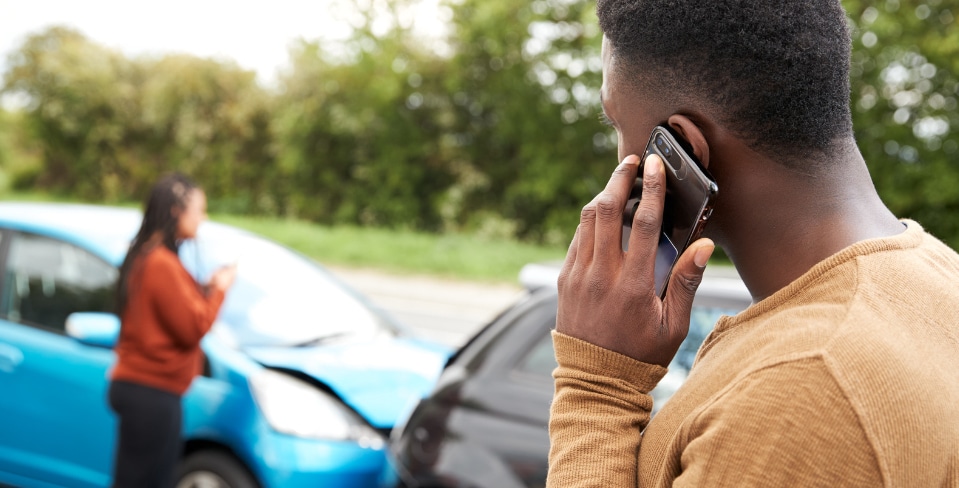
by California Casualty | Auto Insurance Info, Helpful Tips, Safety, Travel |
The car ahead suddenly collides with another vehicle, forcing you to brake hard to avoid the crash. Your heart races, adrenaline kicks in, and as the dust settles, you realize you’re not just a passerby—you’re a witness. But what happens next? Knowing your role in that critical moment can make all the difference.
While it’s not a legal requirement to stop at the scene of an accident, many people do. As a witness, you’re often the first to arrive and can play a crucial role in calling for help. You may also provide key information that helps clarify what happened and determine liability. If you witness an accident, here are the steps to follow.
Find a place on the side of the road near the accident that is about 100 feet away. Stay
away from broken glass, leaked fuel, downed power lines, and other hazards. You don’t want to put yourself or your car in danger. Once you’ve parked, shut off your car and put on your flashers.
2. Call 9-1-1.
Don’t assume someone else is doing it—unless you see and hear them doing it. Notify the police about the accident, which can be more serious than it looks. Be prepared to give your location. Look for the nearest cross street, a mile marker, or nearest off ramp. The operator will ask how many people need help, and if they are conscious, breathing, or bleeding. Now is the time to step out of your car to check.
3. Exit safely if you can.
Only leave your vehicle if it is safe to do so. Be careful of cars whizzing by and of debris on the road, including broken glass and twisted metal. Be aware of smoke, odd smells or fluids that could signal a potential fire danger. Your safety is your priority.
4. Offer comfort and, if needed, first aid.
Approach the vehicles with the accident victims. Ask if they are okay. Let them know that first responders are on their way. Importantly, do not move an injured individual unless there is an immediate danger of fire. You can bind wounds and stanch bleeding; ask the 9-1-1 operator for direction if you’re unsure.
5. Stabilize the scene.
Make sure all vehicles are in park and turned off. If cars are still on, and fuel is leaking, that could cause a fire. If you need to, and if you can, move the damaged car off the road. Otherwise, set up warning flares (only if there are no fuel leaks) or traffic triangles. You can keep these in your trunk for just this purpose.
6. Document the accident.
The victims may not be able to take photos of the crash. Go ahead and do so and add notes so you will remember what happened. Get contact information so you can get the pictures to the people involved in the accident. Pay special attention if it was a hit and run. Any details you remember could help police track down that car.
7. Talk to the police.
When the police arrive on the scene, they will want to talk with you. Simply share the facts. Don’t speculate on fault if you are unsure who caused the accident. Do not feel pressured to answer every question and do not guess at the answers. “I’m not sure” and “I don’t know” are valid responses. It’s possible that you may be called to testify in a court of law. Don’t ignore a subpoena if you get one. That is against the law, and you could be fined or go to jail.
Some final thoughts…
- Witnessing any kind of accident is upsetting. Seeing a fatal accident can be traumatic. Make sure to talk to your pastor, doctor or a therapist to help process the experience.
- Did you see the accident occur or did you come by after it happened? If you didn’t see it, then you’re not a witness. You can still stop and help but let the police know that you do not have any information on the crash.
- Finally, make sure your own vehicle is protected with the right insurance. This will help add peace of mind if you should get in an accident.
This article is furnished by California Casualty, providing auto and home insurance to educators, law enforcement officers, firefighters, and nurses. Get a quote at 1.866.704.8614 or www.calcas.com.
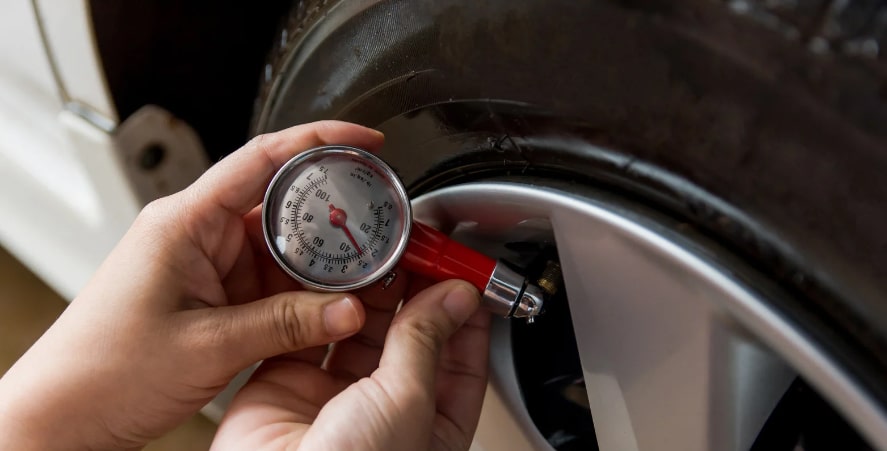
by California Casualty | Auto Insurance Info, Helpful Tips, Safety, Travel |
There are four things standing between you and the pavement when you drive—your tires. Keeping them in good shape is key to staying safe on the road. Whether you’re gearing up for a long drive or just your daily commute, knowing how to check your tire pressure is a small step that can make a big difference.
That’s because the right tire pressure can have some far-reaching impacts:
- A smoother ride and better handling
- Better fuel efficiency
- Improved stopping distance
- A longer lifespan for your tires
What’s the right pressure?
If you drive a passenger car, your tire pressure is likely between 32 to 35 pounds per square inch (psi). SUVs and trucks require a higher psi. Here’s how to find the exact number:
- Open your driver’s side door.
- Look along the doorjamb for a sticker. It should display the pressure (including whether you need specific pressures for front and rear tires and your spare).
- You can also find the recommended pressure in your owner’s manual.
- Importantly, do not go by the number that is on the sidewall of your tires. That is the maximum pressure allowed.
Dangers of Overinflating or Underinflating Tires
You want the right amount of pressure in your tires, not too much and not too little.
- Overinflating causes the center of the tire’s tread to wear faster. It also decreases traction and your tire’s ability to absorb impacts.
- Underinflating causes the outer edges to wear faster. Your car may pull or drift to the side.
- Both overinflation and underinflation cause uneven wear, which reduces your tires’ lifespan. At the very least, it will require you to purchase a new set sooner than normal; at the worst, it could cause a
Start with the Right Tools
Now that you know the basics about tire pressure, you’ll want to gather the right tools. You need a tire pressure gauge to start. While you could use one built into an air machine at a gas station, those aren’t always the most accurate. It’s always good to have your own, which you can use at home and anywhere. You can purchase a gauge at an auto supply or hardware store. You will likely have a choice of three kinds:
- Stick gauge: Usually the most inexpensive option, this type of gauge resembles a pen. It has a small bar that pushes out to show the reading.
- Dial gauge: This type of gauge has a round dial that looks like a clock face or compass. The needle will stop at the number to show the reading.
- Digital gauge: This gauge has an LCD display showing the pressure in numbers. However, it needs batteries to operate and when they run out, you will need to replace them.
Optional but handy:
You can buy a portable air compressor to allow you to fill your tires anywhere and not just at a gas station’s air compressor kiosk. These vary from manual hand-operated or foot pumps to those you can plug into your car’s battery or a 12V power port. You will pay more for one with a built-in gauge, which can be helpful. If you are considering a purchase, look for one where you can put in the proper pressure and the unit will shut off when it reaches that number.
How to Check Pressure
You should check your tires’ pressure monthly or whenever there are changes in weather that could affect them.
- Start with a “cold” tire which is when a vehicle has been parked for 3 hours or more, or one that has been driven less than a mile at moderate speed. Tires heat up when they’re driven and that will increase the air pressure, and you won’t get an accurate reading.
- Remove the screw-off cap on your tire’s air valve. Put it someplace safe where you will not lose it.
- Place your tire gauge over the valve and push it into the stem. If you hear air escaping, continue to press it in until that stops.
- Check the reading on your tire gauge. Note that some gauges need to be in the tire’s valve for the reading; others may be removed.
- If the reading matches the recommended pressure, screw the cap back on. If not, take the next steps to add air or take it out.
- Repeat for each tire.
- If you can access your spare, do it for that one as well. It will be helpful to have a spare ready to go should you need to change a tire.
How to Add Air
You can find air compressors at most gas stations, and they are often free or a minimal charge.
- Park so the tire in need is closest to the machine so the cord will reach.
- Read the directions on the compressor before paying (if there is a cost). Once you pay, you should hear the machine turn on.
- Remove the screw-on cap on the tire valve. Put it somewhere safe.
- Press the hose nozzle on the stem of the valve. You should see the tire inflating and the numbers on the air machine going up.
- If you hear a hissing noise, you’re letting air out. Push the nozzle in to attach it properly.
- Check the pressure with your gauge.
- Repeat until you have the right number. Replace the cap.
If you had to drive a few miles to get to a gas station with air, your tires will be hotter than normal. Remember your base “cold tire” reading and calculate the difference between that and the ideal pressure. Add that amount. (For example, your tires needed to be 33 psi but were only at 31 psi in your driveway, you will want to add 2 psi.) Then, check again later after the tires have been sitting for 3 hours to make sure it’s the right amount.
How to Remove Air
You don’t need an air machine to let air out. You just need a flathead screwdriver.
- Take the cap off the valve.
- Press the end of the screwdriver into the center of the valve stem.
- Hold it for a few seconds. Listen for air escaping.
- Check the pressure and repeat as necessary.
Pressure Changes by Season
As the weather changes, you will notice corresponding changes in your tire pressure. That’s because air expands as it gets hotter, which raises the pressure. It contracts as it gets colder, which lowers it. In cold weather, tire pressure can decrease about 1 psi for every 10-degree drop in temperature. That’s why it’s important to check your tire pressure when the weather changes, in extreme heat and cold, and adjust as needed.
Note that your car’s tire pressure light activates when there’s a temperature change as well as a small leak. The light goes on when the pressure is about 25% below the recommended level.
A Word About Air vs. Nitrogen
When it comes to keeping your tires inflated, you have a choice: air or nitrogen. If you have nitrogen in your tires, you will need to revisit a nitrogen provider to fill your tires. You will not be able to fill them at air kiosks at a gas station.
Keeping the right tire pressure will help extend the life of your tires. Keeping your vehicle well maintained will help extend its life. Finally, protect it with the right insurance coverage. This will give you peace of mind for your journeys ahead. Safe travels.
This article is furnished by California Casualty, providing auto and home insurance to educators, law enforcement officers, firefighters, and nurses. Get a quote at 1.866.704.8614 or www.calcas.com.
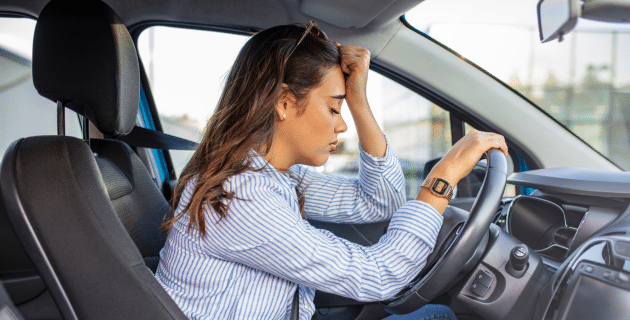
by California Casualty | Auto Insurance Info, Helpful Tips, Safety, Travel |
From traffic jams to reckless drivers, it can be stressful on the road. When you’re also juggling life’s daily demands, the stresses can leave you frazzled behind the wheel. Stressed driving not only affects your personal wellbeing, but it poses risks to road safety. Here’s how to bring back a sense of calm and control — and crush your daily commute.
How Stress Affects the Brain
Stress is the body’s reaction to potential threats. It affects your frontal lobe, where you set goals, make plans, and keep your emotions in control. It also impacts the hippocampus, which stores your memories. Importantly, stress causes a chemical reaction known as “fight or flight.” When you’re stuck in traffic or upset about being cut off, there’s often nowhere to go. That’s when your emotions can turn to road rage.
Driving While Stressed
Stress can cause mental and physical symptoms that affect not only how you feel but how you drive. Recognizing these symptoms can help you take steps to manage your stress.
Physical Signs of Stress
You may notice your heart beating faster or your palms getting sweaty. Those are common symptoms of stress. You also may feel muscle tension in your neck, shoulders and back. Biting nails, tapping fingers, and other repetitive motions also are indicators of stress. You may even get tension headaches or feel unusually tired after a short drive.
Distracted Driving
Stress often leaves you distracted. When you’re worrying about traffic, other drivers, or being late, you’re not focusing your attention fully on the road. Your concentration is reduced. You could have difficulty with decision-making and slower reaction times as a result. If you’re sitting in traffic and you pick up your cell phone to complain about the stress, that adds another level of distraction.
Irritability
When you are stressed, you may feel easily annoyed or angered by minor inconveniences. You start to engage in aggressive driving behaviors such as tailgating, speeding or frequent lane changes. This can escalate to emotions that are hard to control.
Tips to Reduce Your Stress While Driving
Stress may be unavoidable, but you can take steps that help you manage it. Follow these tips to reduce your stress behind the wheel.
- Plan ahead. Know the route you’re taking and plan your journey in advance. Be aware of alternate routes should you encounter traffic or road closures. Bringing the kids along? Pack books, snacks, and games to keep them entertained so that they do not add stress to your trip.
- Leave early. Allowing extra time for your journey can help you better handle the unexpected, such as traffic, weather, or detours. When you leave early, you are less likely to worry about being late.
- Set your playlist. Research shows that listening to music can enhance immune system function and lower levels of the stress hormone cortisol. Create a mindful playlist and avoid news or any content that might stress you out. Sing along to your favorite tunes for a mood boost.
- Adjust your posture. Improving your posture can increase oxygen flow, decrease tension in the neck and shoulders, and reduce physical discomfort. Adjust your seat and mirrors to maintain a comfortable and relaxed driving position.
- Breathe. Inhaling through your nose and into your belly is a proven way to reduce stress. Deep breathing sends a calming message to your brain, helping you relax. If you’re feeling stressed, try this breathing exercise: breathe in for a count of 8, contract one muscle group (like your neck and shoulders), then exhale and relax. Repeat for muscle groups in your neck, shoulders, and back as needed.
- Change your perspective. Managing your thoughts can help control your emotions. Instead of getting angry at a driver who cuts you off, think, “I’m glad no one got hurt.” Don’t let a stranger’s actions affect your mood.
- Pull over if needed. If stress becomes overwhelming while driving, don’t risk it. Find a safe location to pull over and take a break until you feel calmer.
- Stay fueled. Keep your car filled with gas to avoid the added stress of running low. When planning your trip, make sure you know when you plan to fuel up.
- Maintain and insure your vehicle. Make sure your vehicle is well maintained so it is less likely to break down and leave you stranded. In addition, protect your vehicle with the right insurance coverage. This will give you peace of mind for your journeys ahead. Safe travels.
This article is furnished by California Casualty, providing auto and home insurance to education professionals, law enforcement officers, firefighters, and nurses. Get a quote at 1.866.704.8614 or www.calcas.com.
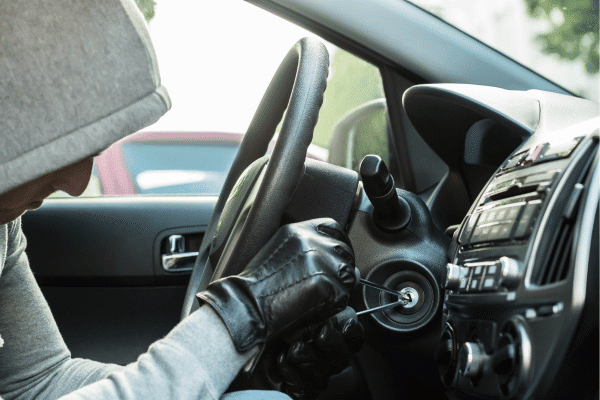
by California Casualty | Auto Insurance Info, Calcas Connection, Good to Know, Helpful Tips |
You’re ready to head home after a night out, but there’s one thing missing: your car. You could have sworn you parked it right here, but it’s no longer there. Vehicle theft can happen anytime, anywhere. When it comes to keeping your car safe, where you park can make all the difference.
Theft by the Numbers
A vehicle is stolen every 32 seconds, according to the National Insurance Crime Bureau. More than a million vehicles are reported stolen each year. California and Colorado have some of the highest number of auto thefts in the country, and of course, urban centers are hotspots for theft. However, thefts happen in the suburbs too, and cars can even be taken from your driveway. In honor of July, National Vehicle Theft Protection Month, we’re taking a look at what you need to know to keep your vehicle safe.
The Worst Places to Park Your Car
Thieves are looking for a chance to steal a car. Don’t give them the opportunity to steal yours. Before you park your car for a short time, or overnight, look around and assess the area for theft potential. Is the area well lit? Are other vehicles parked nearby? Are people around? Is there a security camera or guard? Are there signs of break-ins or damage? All of these can offer clues to an area’s safety.
Avoid empty streets.
Quiet streets and alleyways offer thieves a place to work without interruption. With no one around to witness the theft, they can get in and out quickly with your vehicle.
Avoid poorly lit areas.
Thieves prefer locations where they can work without being seen. Well-lit areas increase their chances of being noticed, while poorly lit and dark locations offer cover.
Avoid high-crime areas.
Do your research before parking in a new place. If the crime rate is high, it’s worth paying for a more secure parking option. High-crime areas aren’t just seedy sections of town. They could be residential neighborhoods that are targeted by thieves.
Avoid empty lots.
You may see lots of cars at office parking lots or at schools. However, when these buildings are not in session, the empty lots provide an easy place for thieves to work. Don’t be tempted to park in an empty lot and put your vehicle at risk.
Avoid remote locations.
Places that are less frequently traveled can be attractive for thieves. Chances are these locations are less often patrolled.
Avoid parking near large vehicles.
Parking your smaller car next to a larger vehicle automatically gives thieves cover. The truck or large car blocks the view so they can work without being easily seen.
How to Protect Your Vehicle
A skilled thief can steal a car in about a minute. However, there are things you can do to make your car seem harder to steal because it will take longer, or they are more likely to get caught.
When parking away from home:
- Park in a garage with security cameras. Park in view of the cameras.
- Be aware of tow truck thieves who come in and tow away your vehicle. When you park, turn your wheel as far to one side as possible. If you have front-wheel drive, park forwards in the spot. For rear wheel drive, back into the spot. This will make it harder to tow your car.
- If you’re parking on the street, choose a busy road where there will be people and other cars the whole time your car will be there.
- Lock your vehicle. The first thing that thieves do is try the doors.
- Hide your valuables out of sight. Even loose change, phone chargers, and other items can tempt thieves to break in.
- Don’t crack your window open on a hot day. An experienced thief can use that to get inside.
- Protect your catalytic converter by etching your VIN onto it.
- Don’t run your car with the keys in it – while you’re somewhere else.
- Keep your registration and insurance in your wallet rather than your glove compartment. That will help prevent the risk of identity theft if your car is stolen.
- Use an anti-theft system. New cars come with one, and you can also add one after market.
When parking at home:
- If you can, park inside your home’s garage. Don’t leave the garage door open. Out of sight is out of mind, and thieves won’t try to steal a car they cannot see.
- Add motion sensor lights to your home and driveway area.
- Don’t leave your key fob in the car. Don’t put it near a door or window inside your home either. Thieves can use the signal to break into your vehicle. Consider keeping keys in a container that doesn’t allow digital signals to pass through.
If your car is stolen, be aware of resources for auto theft victims. Your vehicle is one of your greatest investments. Protect it with the right insurance.
This article is furnished by California Casualty, providing auto and home insurance to educators, law enforcement officers, firefighters, and nurses. Get a quote at 1.866.704.8614 or www.calcas.com.
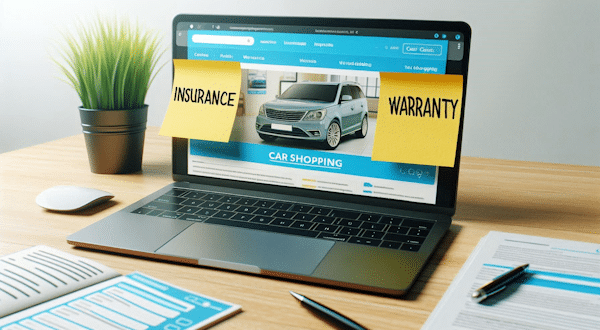
by California Casualty | Auto Insurance Info, Helpful Tips |
When it comes to protecting your vehicle, car insurance and vehicle warranties both play a big role. Knowing the difference between the two can help you make informed decisions about the coverage you need.
Vehicle Warranty
New car warranties
When you buy a new car, you get a factory warranty from the vehicle manufacturer at no additional cost to you. It is a guarantee that the car you bought is in good working order. A vehicle warranty covers replacements or repairs in case a component breaks or fails for a specified period. Typically, there is no deductible with a new car warranty. It covers both the new part and the labor.
A new car warranty generally comes in two parts:
- Bumper to bumper coverage: This covers repairs to most parts including electronics and air conditioning (for typically 3 years or 36,000 miles).
- Power train coverage: This covers the engine and transmission (for typically 5 years or 60,000 miles).
Sometimes a manufacturer’s warranty includes a limited corrosion warranty, emissions warranty, tire warranty, hybrid and electric car battery warranty, and roadside assistance. When your warranties expire, you often have the option to purchase an extended warranty.
Used car warranties
You can get warranties for used cars. A limited warranty comes with a certified pre-owned (CPO) vehicle. The cost is rolled into the higher price you will pay for a CPO vehicle. You also may purchase an extended warranty from your car’s manufacturer or a third party for most used cars. The cost of that extended warranty usually depends upon vehicle age, mileage, make and model, coverage level, your deductible, and the warranty provider.
What warranties cover and what they don’t
Warranties protect you against defects in your car’s parts from power windows and the infotainment system to your engine and transmission. They help cover repairs for those parts if they break or fail during the warranty period. Most car warranties are similar in their broad coverages but may differ in the details so check your policy for what is covered.
Warranties do not cover everything. They do not cover routine maintenance like oil changes or tire rotations. They do not cover wear-and-tear parts like brake pads or wiper blades. They do not cover damage from collisions, damage caused by the owner, severe weather, fire, or theft. For the latter, you need vehicle insurance.
Vehicle Insurance
Car insurance is required by law in most states for any car – new or used – that is on the road. This type of insurance pays for damage from a collision, or another covered adverse event such as fire or theft. Auto insurance does more than fix your car. It can help with medical bills for you, your passengers and the people you hit in a collision. It can help pay if the other driver is not insured. It even covers damages when another driver is at the wheel of your car and has an accident because insurance follows the car, not the driver.
What vehicle insurance covers and what it doesn’t
Car insurance policies are made up of different coverages. You choose the types you need from a range of options. Your premium is determined in part by the coverages that you choose.
- Liability: If you are at fault in an accident, and others are involved, it’s good to have liability coverage. Liability coverage is required by law in most states. It covers you for bodily injury and property damage you cause to others. However, it does not cover any damage to your own vehicle; that’s covered by collision. It also does not cover injury to you and your family; it only covers the people in the other car.
- Collision: This coverage is if your car is damaged in a collision with another car or an object, such as a fence. Your collision coverage will pay for repairs minus the deductible. Collision coverage is not required unless you’re leasing a car or paying off a loan on a vehicle. However, it may be good to have, especially in the event of an accident.
- Comprehensive: Comprehensive coverage is for natural disasters, fires, vandalism, theft and animals that damage your vehicle. Think of it as “bad luck coverage.” Comprehensive coverage is not usually required unless you’re leasing a vehicle or paying a car loan. However, it’s valuable to protect your car.
- Medical expenses: If you or others are hurt in an accident, you will want medical expenses covered. You will either be able to get medical payments coverage or personal injury protection (PIP). These coverages apply to everyone in your car whether or not you are at fault in the accident. This type of coverage is good to have, as your health insurance may not cover auto accidents and does not normally protect your passengers. PIP is only available in some states and may be mandatory if your state offers it.
- Uninsured or underinsured motorist: You may encounter drivers who are not insured or who are underinsured. If so, you will need insurance to cover your car and the people in your car if hit by an at-fault driver in that situation. Uninsured/Underinsured Motorist Property Damage (UMPD) helps pay for repairs to your vehicle. Uninsured/Underinsured Bodily Injury coverage pays for medical treatment, lost wages, pain and suffering for you and your passengers. These are optional coverages in most states. In some states, you are not allowed to carry collision and UMPD at the same time. Also, sometimes UMPD has a policy maximum, or cap on the amount it will pay.
Talk to your insurance agent to see what is covered under your policy. That way you’ll be fully prepared should anything happen. Safe travels.
This article is furnished by California Casualty, providing auto and home insurance to educators, law enforcement officers, firefighters, and nurses. Get a quote at 1.866.704.8614 or www.calcas.com.
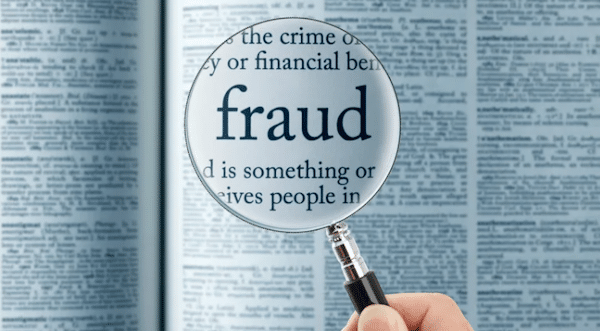
by California Casualty | Auto Insurance Info, Helpful Tips |
It never feels good to fall victim to a scam or pay more for a product because of it. That’s what it is like with car insurance fraud.
Car insurance fraud happens when someone lies to get a better rate or a larger payout. It could be intentional or accidental, but either way it can cost you money in premiums. The FBI estimates that car insurance fraud costs the average family an additional $400 to $700 every year. In addition, nearly 7 in 10 consumers are tricked into illegal schemes, according to the Coalition Against Insurance Fraud. Here’s what you need to know about car insurance fraud, including some clever scams that could catch you unaware.
What are the types of fraud?
Staged Accidents
In staged accidents, dishonest people intentionally cause a collision with an unsuspecting driver. Then they misrepresent the situation, putting the other driver at fault—and thus get a payout that they don’t deserve. Common scenarios for staged accidents include:
-
-
-
-
- Two vehicles trap your car and force you into a rear end collision.
- Someone waves you on that it is safe to pull out, and then another car collides with you.
- You are tricked into turning early and the oncoming driver moves forward and collides with you.
- Another car purposefully sideswipes your vehicle in a dual left turn intersection.
- A car deliberately and abruptly brakes in front of you.
Injury Fraud
Dishonest people can file claims for unnecessary medical treatments or for treatments that they did not receive. Injury fraud also includes claims where people exaggerate the extent of their injury to get a bigger payout.
Exaggerated Claims
Sometimes after an accident, a dishonest person can cause additional damage to their vehicle to receive a bigger payout. That’s why taking photos of the damage is so important to do at the scene of the accident. Another exaggerated claim could be to file multiple claims for the same accident. Finally, disreputable shops can charge for repairs that weren’t made or for substandard work.
Counterfeit Airbags
If you have your airbag replaced by a dishonest shop, you might be charged for the original equipment manufacturer (OEM) bag but get a counterfeit one installed. In a worst-case scenario, a disreputable shop could install a garbage bag stuffed with rags. Counterfeit bags are dangerous and may not protect you in the event of an accident. The good news is that it’s easy to check. With an airbag, the light on your dashboard will flash when you start the car. You can also ask an authorized dealer to check that you have a quality airbag.
Windshield Replacement Scams
There are a variety of different scams associated with windshield replacement. Here are some of the most popular.
-
-
-
-
- A stranger approaches you in a parking lot and offers a free windshield replacement. They point out nonexistent damage that can be fixed. They take your insurance information and file an exaggerated or false claim.
- Windshield scam artists also could go door-to-door or call you with a “special” for customers in your area. Then they follow a similar process of filing a false claim.
- If you live in one of the states that has no deductible for windshield replacement, con artists can file a claim for your windshield and charge you for the deductible.
Tow Truck Scams
Tow trucks that appear right after your accident could be “bandits” who will only tow your vehicle to their shop and charge you hundreds to repair and release it. Calling your own tow truck will help you to avoid this scam.
False Reports of Stolen Vehicles
Reporting a vehicle that hasn’t really been stolen as stolen is illegal. So is misrepresenting the value of a stolen vehicle.
False Documentation
Intentionally providing a false address for your policy to get a better rate is a form of fraud. Understating the annual mileage, misrepresenting the use of a commercial vehicle, and failing to add a new driver also is fraud.
What are the consequences of fraud?
It depends on the seriousness of the fraud. For minor infractions, your claim can simply be denied. For more serious offenses, your policy may be canceled, you could be fined or even serve jail time. A misdemeanor for auto insurance fraud can come with a fine and probation. A felony conviction can result in significant fines and prison time.
How can you fight against fraud?
- Carefully check your insurance application forms for mistakes.
- If you’re in an accident, take good notes of all those involved. Take pictures at the scene. Don’t sign any documents or agree to any terms at the scene of the accident.
- Don’t accept fault for an accident if you believe you are not at fault.
- Be wary of individuals offering services that you didn’t request. Avoid sharing details about your auto policy with those who may be disreputable.
- Don’t tailgate. This gives criminals a chance to take advantage.
- If your car needs repairs or maintenance, go to a trusted professional.
- Don’t accept a windshield replacement offer.
- Choose OEM parts for vehicle repairs to avoid counterfeits. Before buying a used car, have a certified mechanic check that there are authentic air bags.
- Avoid rushed decisions. If someone is pressuring you into something, that could be a red flag.
If you suspect fraud, report it to your insurer as well as to the National Insurance Crime Bureau at 800-835-6422 https://www.nicb.org/.
This article is furnished by California Casualty, providing auto and home insurance to educators, law enforcement officers, firefighters, and nurses. Get a quote at 1.866.704.8614 or www.calcas.com.






